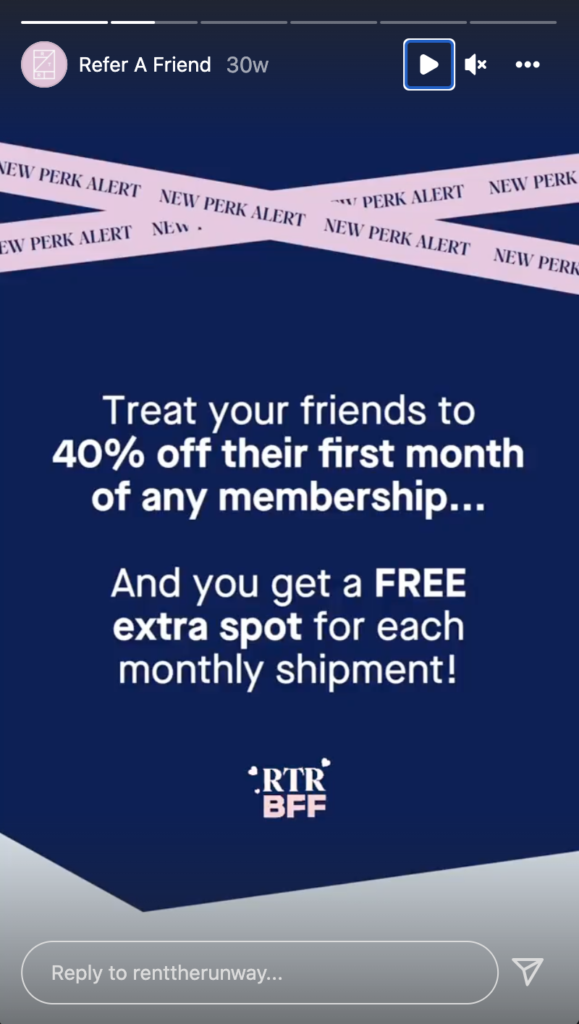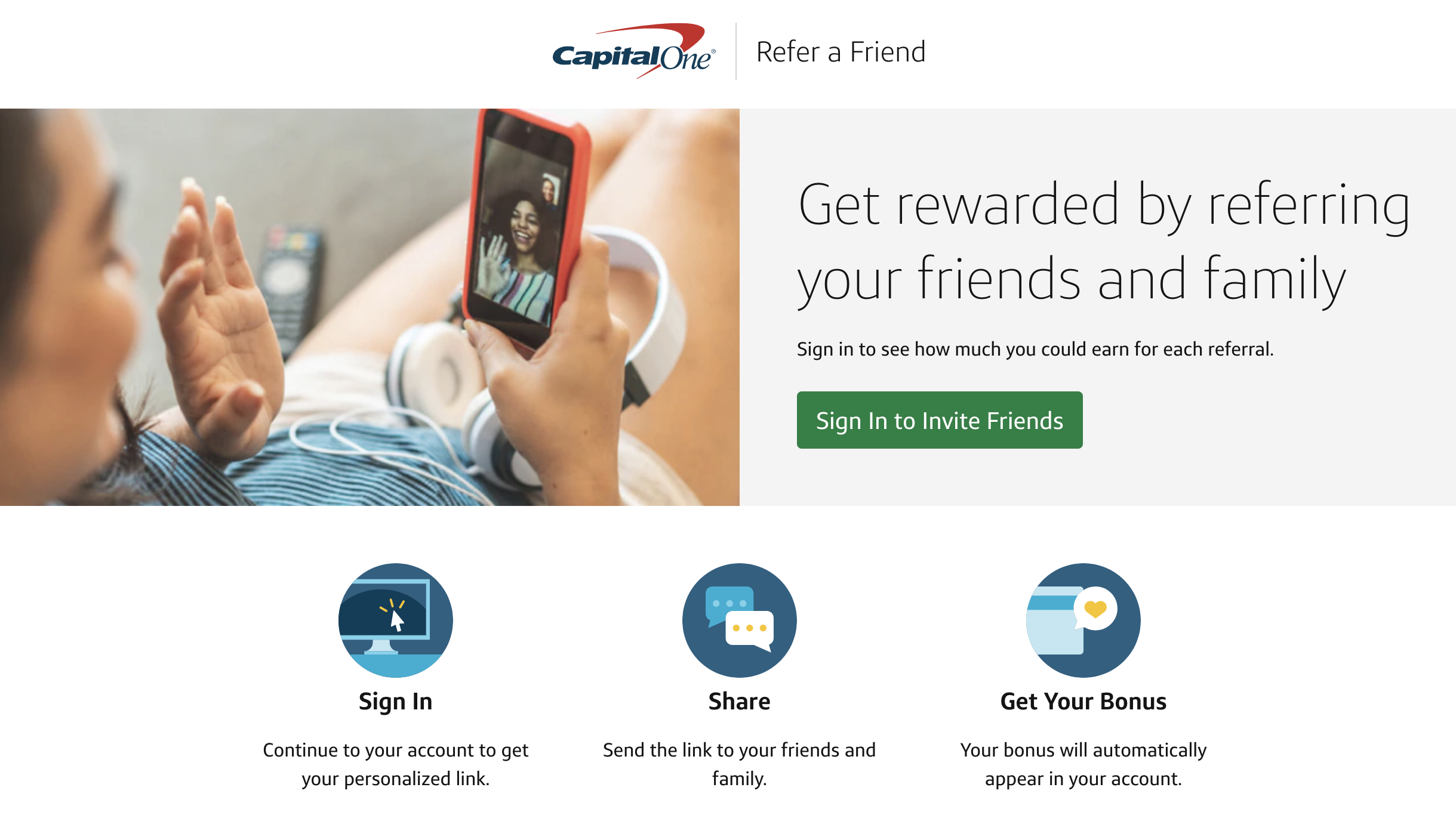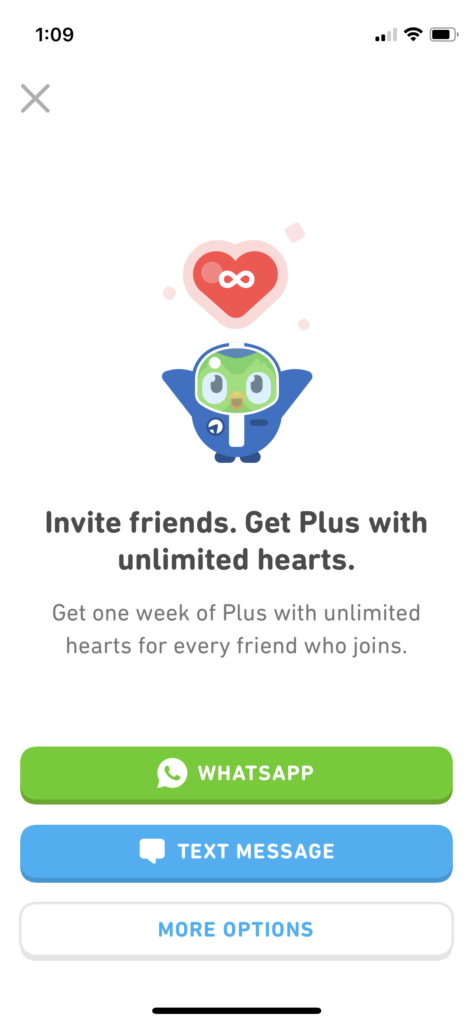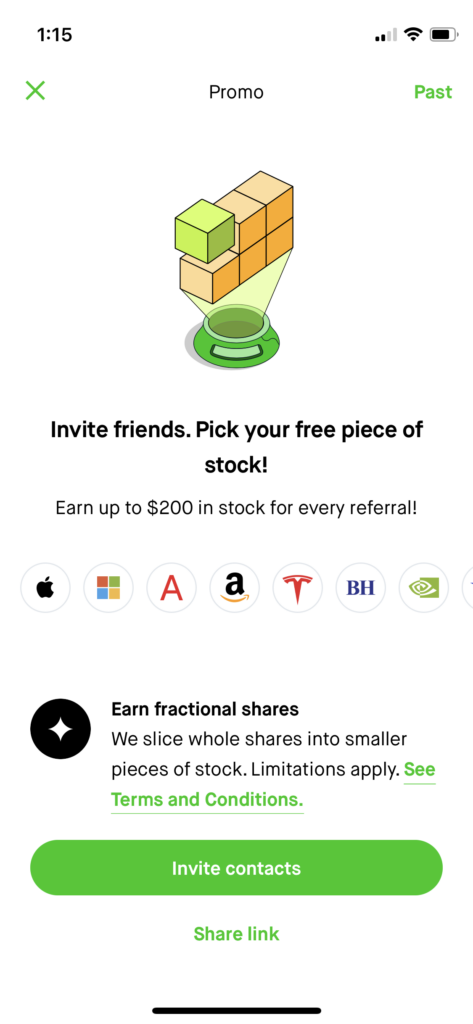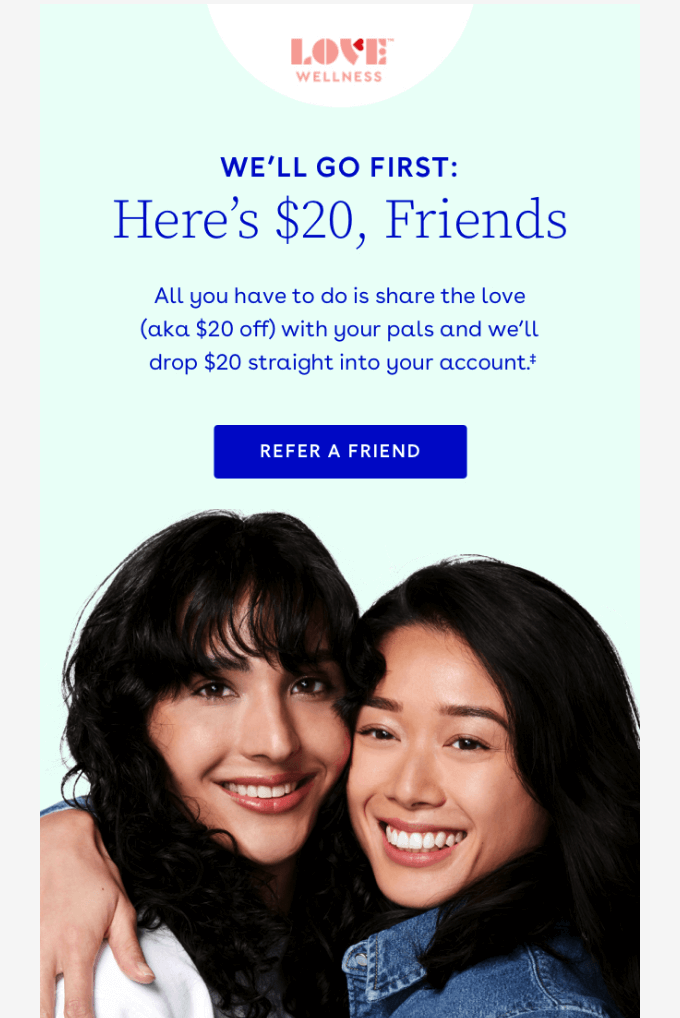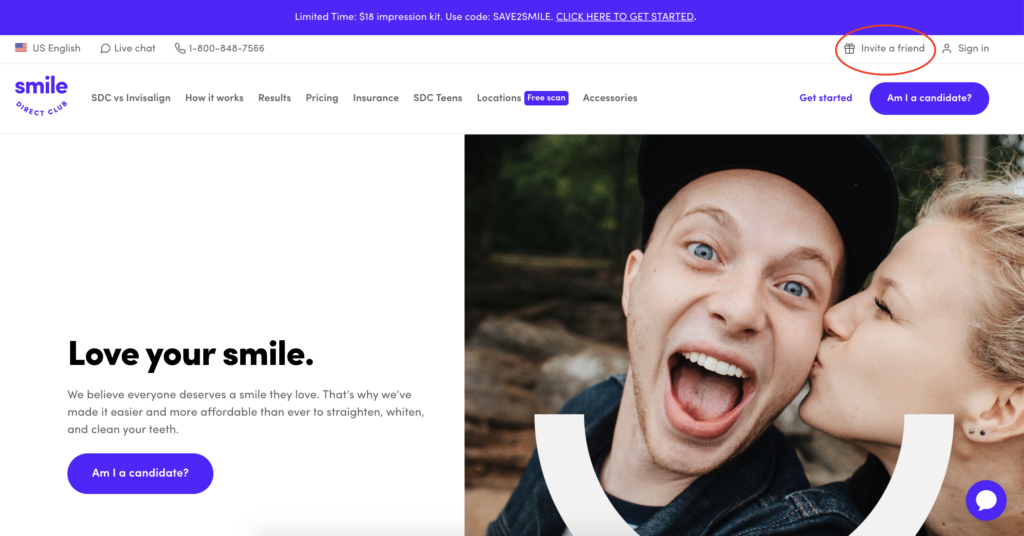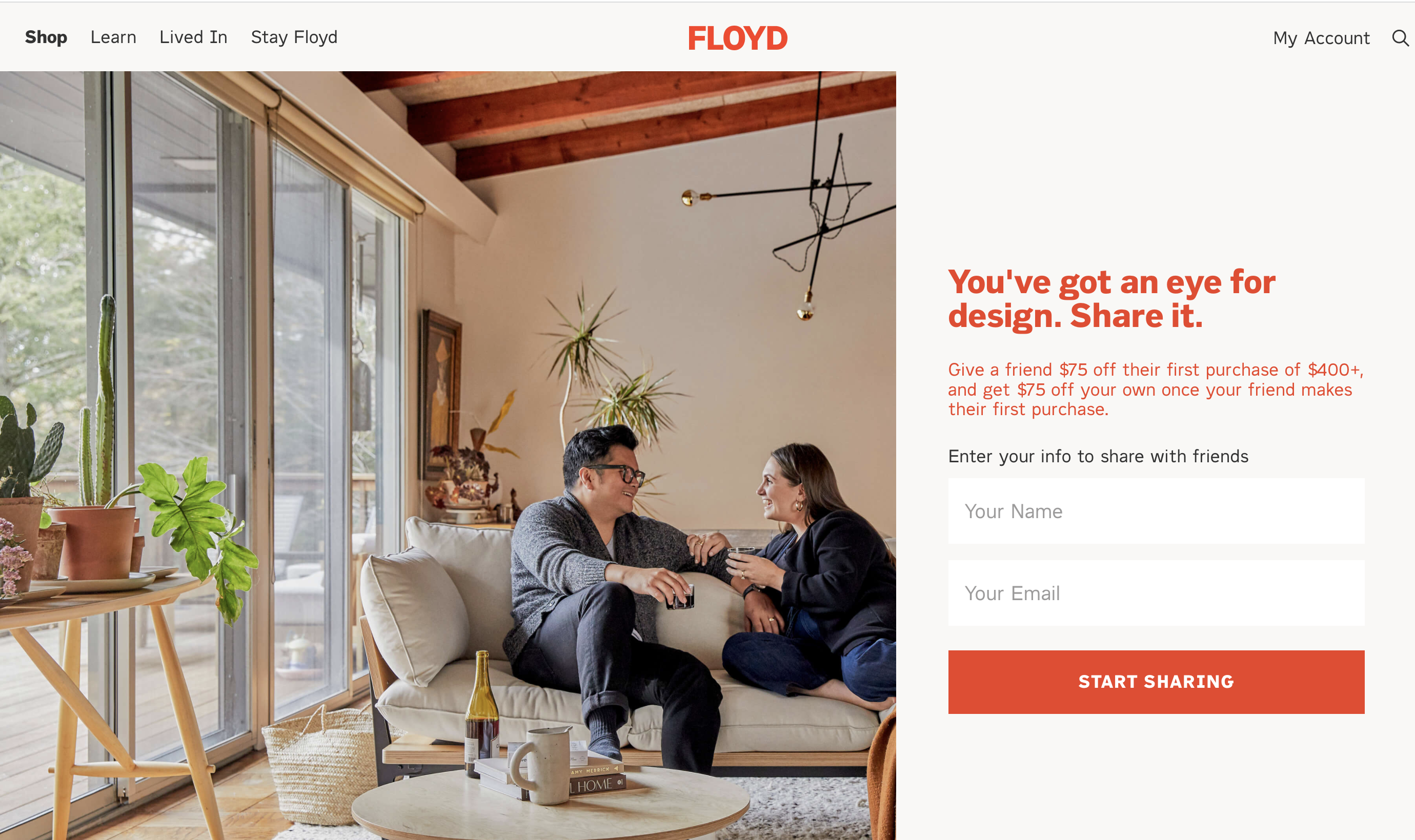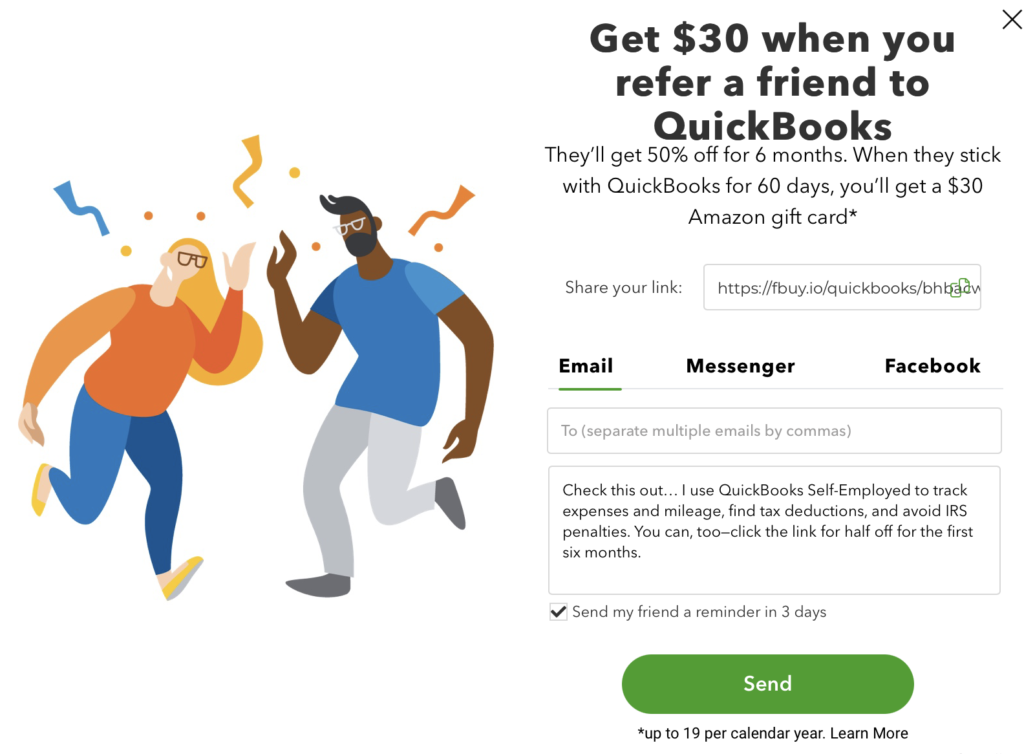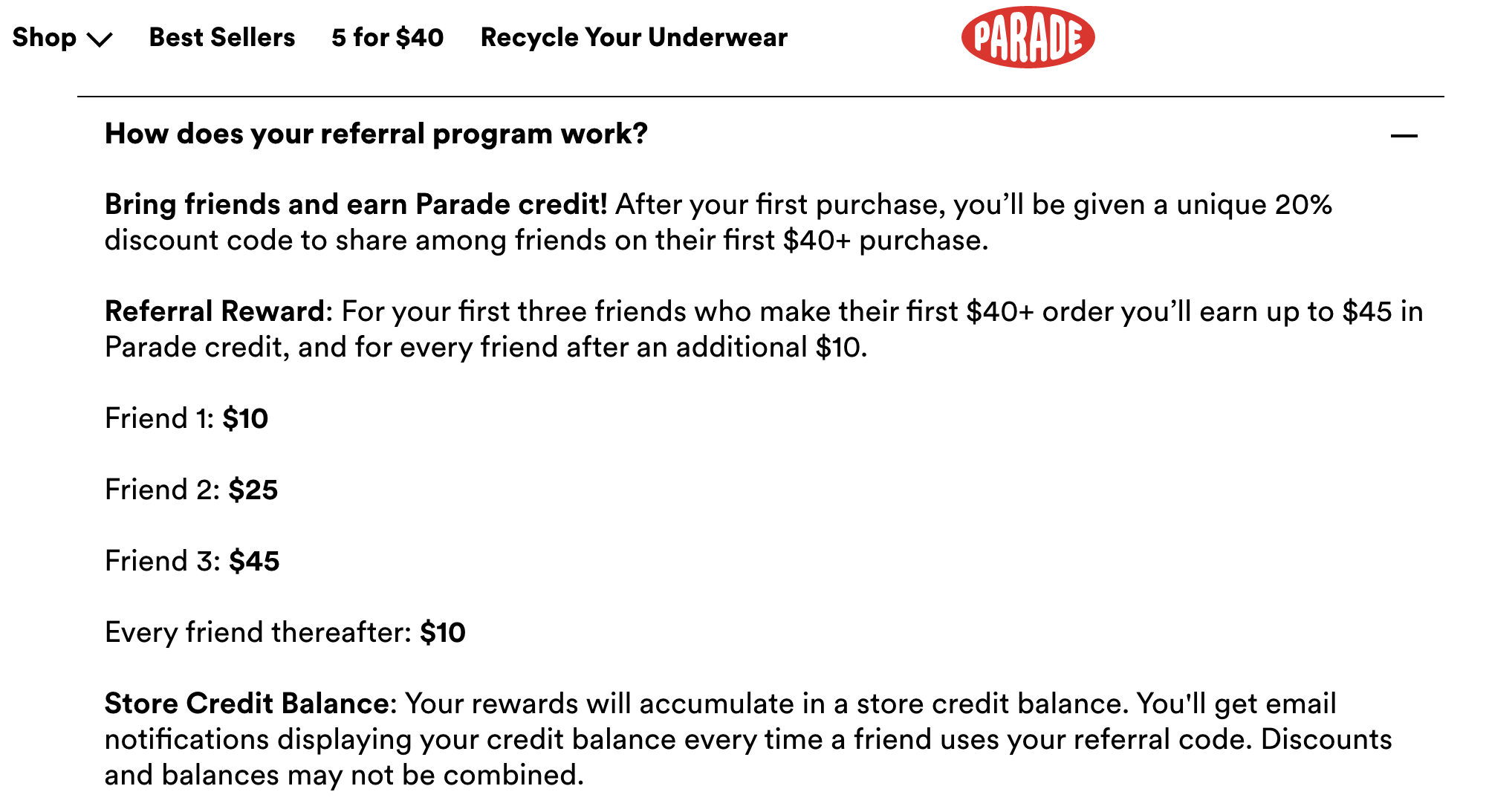Referral marketing still reigns supreme as the most trusted form of advertising, with consumers 83% more likely to purchase a product after hearing about it from a friend or family member.
The magic that makes referrals work is that it turns your best customers into brand advocates who want to share your products with their friends and family.
Most referral programs are all the same: give a reward to gain that same reward back. This idea alone is stale. Brands that successfully engage loyal customers now approach the referral model in new, creative ways. Some of these fresh approaches include tiered systems, gamified rewards, and temporary bonus periods where rewards are even bigger. If you’re an e-commerce brand without a referral marketing program in place, you’re missing out on a huge opportunity to build brand loyalty.
We’ve pulled together 10 referral marketing examples that explore ways brand loyalty is evolving, so you can build interest in your program without taking the cookie-cutter approach.
1. Rent the Runway Offers Extra Product
Fashion subscription service Rent the Runway lets members rent high-end designer fashion at a fraction of the cost of buying.
The deal: Invite a friend to join. They’ll get 40% off their first month, and you get an extra item in your next order.
Source: Instagram.com/RenttheRunway
Why this program works: Traditional referral programs offer a give-to-get reward based on store credit or a discount. For example, give 15% to a friend, and you get 15% off an order. Rent the Runway creates added value with a product incentive for customers who share with friends and family.
2. Capital One Drops Rewards Straight into Users’ Accounts
Capital One offers some of the most popular credit cards in the U.S., with a strong customer service team to boot.
The deal: Refer a friend to sign up for a Capital One credit card and gain rewards, like points or cash.
Source: CapitalOne.com
Why this program works: Customers get rewards based on their card type, including airline miles, cash back, and store points. This gives them more incentive to use their Capital One credit card over another company.
Any company with a rewards system can implement a similar program for its customers.
3. Duolingo Adds on Premium Services
Duolingo gamifies the experience of learning a new language with a user-friendly mobile app.
The deal: For each friend who signs up, users gain a free week of premium access to Duolingo.
Source: Duolingo.com
Why this program works: Duolingo rewards its loyal customers with access to premium services instead of merch or products.
Companies that offer services rather than products can look to Duolingo’s referral program. Customers don’t necessarily want things,but they still want value from their referral reward.
4. Robinhood Gamifies Rewards
Financial services company Robinhood offers app-based investment portfolios that are popular among millennial and Gen Z consumers.
The deal: Robinhood users who invite a friend to download the app receive a share of stock randomly selected from a pool of shares.
Source: Robinhood.com
Why this program works: Robinhood’s program adds a gamified element to its referral program, which gives users a chance to win big. The shares start at $2.50 but could be worth up to $225.
If you want to implement a similar program, consider creating a menu of options to be randomly awarded to referral customers. Include at least one big-ticket item to drive participation.
5. Love Wellness Offers Bonus Reward Periods
Love Wellness creates clean beauty products and supplements to support women’s bodies.
The deal: Love Wellness’ referral program offers customers $10 off when they share a referral link with friends and family. Occasionally, the company adds on bonus periods to give customers even more for their referrals.
For example, Love Wellness sent an email to customers with a special link for $20 off their order. The offer? For every purchase a friend makes, Love Wellness will give you a $20 reward.
Source: ReallyGoodEmails.com
Why this program works: Love Wellness already has a referral program in place (give $10, get $10 off your next order).
This example stands out because Love Wellness amped up perks for a short period of time, doubling the referral amount. The added incentive drives new referrals for customers who weren’t excited about the standard offer and encourages repeat referrals.
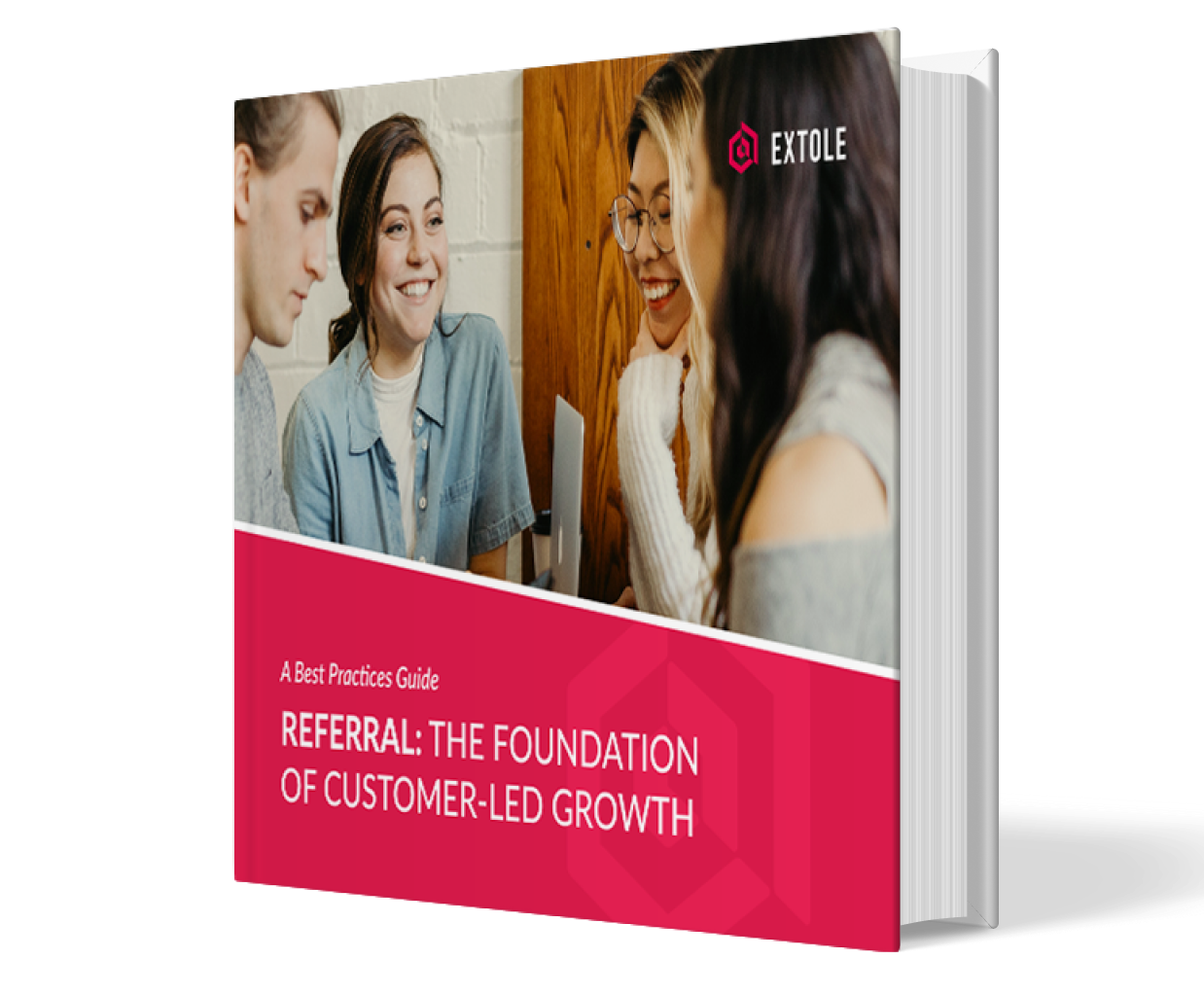
Referral Marketing – The Best Practices You Need to Know
Written by veteran referral marketers, this guide will help you optimize your referral marketing program and supercharge growth.
Get the Guide6. SmileDirect Club Makes Its Program Easy to Find
SmileDirectClub is an online company that offers dental-correcting retainers at a fraction of the cost of the orthodontist.
The deal: Share a link with friends for $100 off their order, and you get $100 toward your next order.
Source: SmileDirectClub.com
Why this program works: The traditional “give-to-get” referral program model is tired, but SmileDirect’s evergreen promotion stands out for its ease of use.
Most referral programs work by sending a customer one unique link that’s trackable using analytics. But customers are likely to lose their link if they don’t refer someone right away.
SmileDirect’s program eliminates this problem with a button at the top of its website that reads “Invite a Friend.” The simple call-to-action makes it easy for customers to refer a friend without combing their deleted emails for a unique code.
7. Floyd Offers Major Discounts
Sustainable furniture brand Floyd creates durable pieces that are “designed for longevity.” Its aim is to simplify the process of shopping for furniture with practical and adaptable designs.
The deal: Floyd gives customers a link to share with friends, good for $75 off a purchase of $400 or more. The customer also gets the same discount.
Source: FloydHome.com
Why this program works: Eighty percent of consumers are more likely to buy from a brand that’s new to them if that brand offers a discount. That psychology is at play in Floyd’s program. Furniture is expensive and a big investment for the average consumer. Floyd’s referral model incentivizes people to buy because they are getting an incredible deal on well-made designer furniture.
8. T-Mobile’s Referral Program Is Designed for a Tight Budget
Wireless carrier T-Mobile is known for its excellent customer experiences. The company was recently named the top in customer care in the mobile network operators segment by J.D. Power.
The deal: For every friend you refer, you get $50, with a cap of $500 a year.
Source: T-Mobile.com
Why this program works: T-Mobile built its program with a high threshold for a maximum referral amount per person. But that cap gives T-Mobile a rough idea of exactly how much it will spend on referrals for the year, making it an easy marketing strategy to budget for.
T-Mobile’s program is one to look to if you’re on the fence about creating a referral program because of a tight budget.
9. QuickBooks Offers a Steep Discount for Referrals
Financial software platform QuickBooks provides easy-to-use and uncomplicated accounting services.
The deal: Refer a friend and receive a $30 Amazon gift card. But this program has a catch: your friend has to stick with the program for 60 days before your reward kicks in. But your friend will receive 50% off QuickBooks for their first six months. It’s a great offer for both parties.
Source: QuickBooks.Intuit.com
Why this program works: This program, while more complicated than many of the examples on our list, has tremendous value for referral customers.
The cost of a majority of QuickBooks memberships is less than $30 per month. This means most customers who receive an Amazon gift card for $30 earn more than the cost of their membership. For referral customers, the deal is even sweeter – receiving 50% off their membership for half the year.
This program showcases an excellent way to build brand loyalty quickly, with rewards that let new customers feel the value of their reward right away.
10. Parade Creates Referral Reward Tiers
Parade is a Gen Z staple, offering sustainably made and stylish underwear.
The deal: After their first purchase, customers receive a code for 20% off to share with friends. For each friend who uses the code, the customer gains store credit on a tiered system that increases as more friends make purchases.
Source: YourParade.com
Why this program works: Parade’s tiered program is a way to build customer loyalty quickly. The more people you refer, the more rewards you’ll get.
Beyond the tiered system, Parade has incorporated its referral program into every customer experience by giving a unique code to all first-time customers. This means each new customer immediately receives an incentive to refer friends and start earning rewards.
Expand Your Customer Reach with a Referral Marketing Program
These referral marketing examples prove that a referral program doesn’t have to be cookie-cutter to be effective. Take the simple “give to get” model and put your brand’s twist on it, offering tiered rewards, services rather than products, or the occasional extra reward burst.
Manage your referral program with Extole’s Refer-a-Friend tool. Our tool comes with referral templates that are ready to share with customers and mobile-friendly. It’s also designed to let you manage multiple types of rewards at once, so you can build a referral program that truly works for your audience.
Sign up for a demo to get started.


